Learning how to make port screens for your boat port windows isn’t difficult. Keeping mosquitoes outside is a necessity for sailing cruisers. After getting bitten alive, I decided to come up with a way to keep the little buggers out.
The first line of defense for boaters wanting to avoid bug bites is to ensure that the boat has screens. This article offers step-by-step instructions in written and video format.
Learn how to save over $85 by making your port screens!
On Britican, we have professionally made screens for some of our port windows but not all of them. Our professionally made port screens cost around $85 a pop. At West Marine, a standard Portlight Clip Flyscreen costs $60 each! Fed up with watching our savings drain down, I decided to find an alternative solution—a Do-It-Yourself (DIY) option.

Each DIY port screen came out to around $2.00!
Watch the video. Below is the list of products used, step-by-step instructions, and some helpful tips not included in the video.
How to make port window screens VIDEO
DIY port window screen materials
Note that the links open on a new screen and are the exact products I used to make the port window screens.
- Paper towel or paper (to make a template)
- Scissors
- Ruler
- Sharpie or marker
- Glue (I used a glue that had a permanent bond, was washer-dryer safe, in case they got wet, and was flexible). See below for link.
- Screen. See below for link.
- Foam sheets. See below for link.
Materials I used from Amazon
Step 1: Make a port screen template
Use either a paper towel or a paper thin enough to see through. I used a paper towel because a single sheet of paper isn’t large enough. With a paper towel, I taped the towel to the widow and folded it to size, and where I couldn’t fold it (around curved corners), I used a marker to sketch the curve.
Once the paper towel is ready, take it down and cut out any pieces to make the master template for the port screens.
Check that the template works. You’ll want to ensure the template is larger than the screen area.
The aim is for the finished screen to fit between the port window frame. There’s a gap, and we want the screen to squeeze into it, allowing it to stay in place.
Trim the template to get as close as possible. Make sure to make the template too big for the port screens rather than too small!
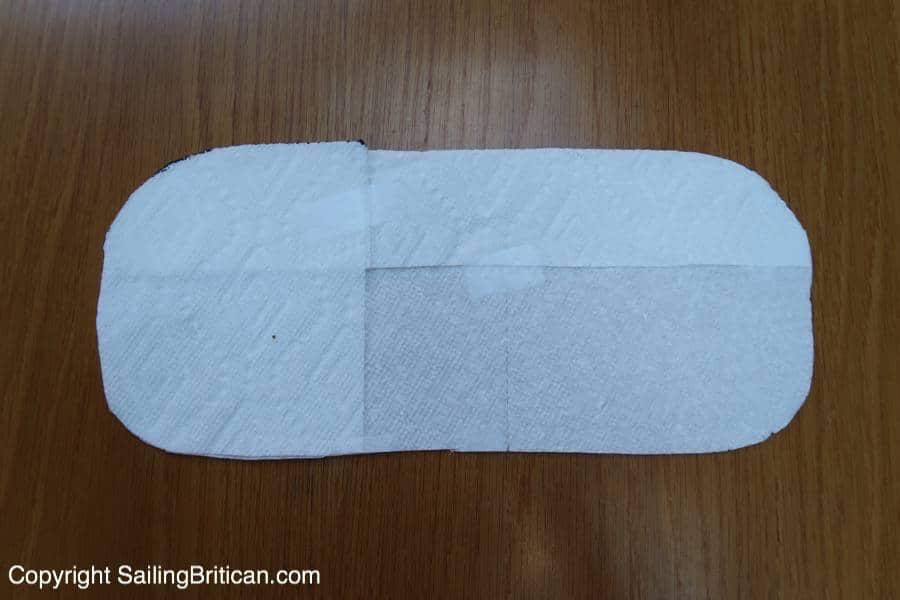
Step 2: Use the template for the port screens to cut out the first foam piece.
Once the foam piece is cut out, check it fits into the window. Trim the foam until you get a good, snug fit.
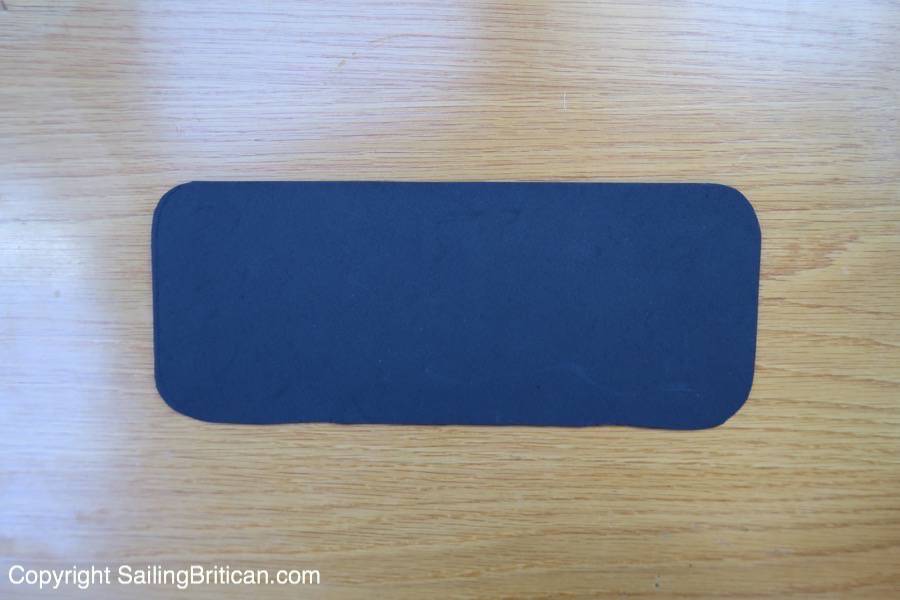
Step 3: Use the first foam piece to outline and cut a second foam piece.
Tip: Make sure to keep the foam pieces in line. You might want to put a TL for ‘top left’ on both. If they flip over, the pieces might not fit perfectly.
Step 4: Cut out the middle section on the first foam piece for your port screen.
Using a rule, make dots ½” from the edge towards the body of the foam piece all the way around. Connect the dots with a ruler to ensure a nice smooth line.
Cut the middle section out.
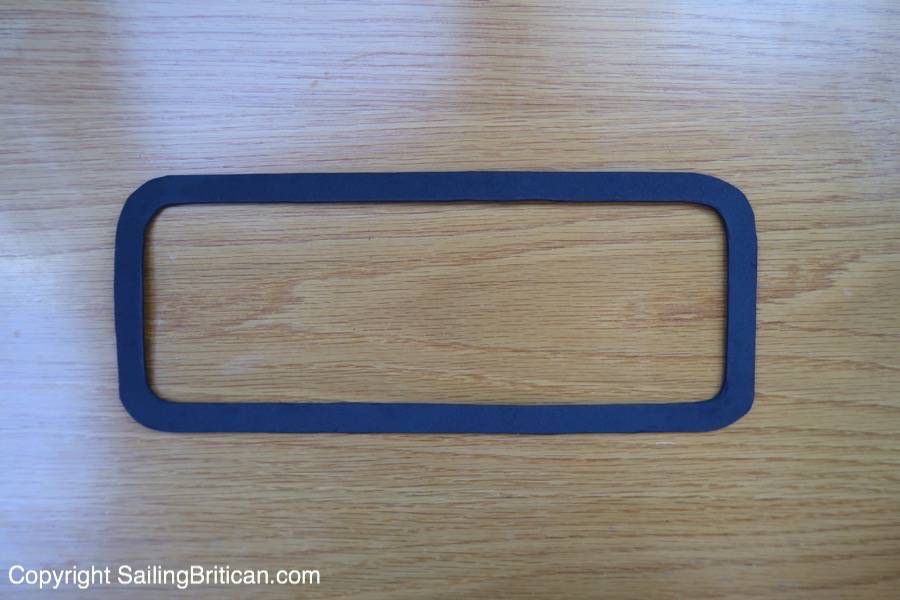
Step 5: Use the first foam piece as a template for the second foam piece
Draw a line using the first foam piece as a template. Take your time on this – the foam will move around. You want both foam pieces to match as best as possible. Cut out the second foam piece.
Step 6: Cut out a piece of screen
Tip: I suggest you cut out a piece of screen larger than the foam pieces. When I first tried making a screen, I cut it using the template. When I laid the screen on the glue it didn’t match correctly, I couldn’t move it easily and I managed to get glue all over the port screen!
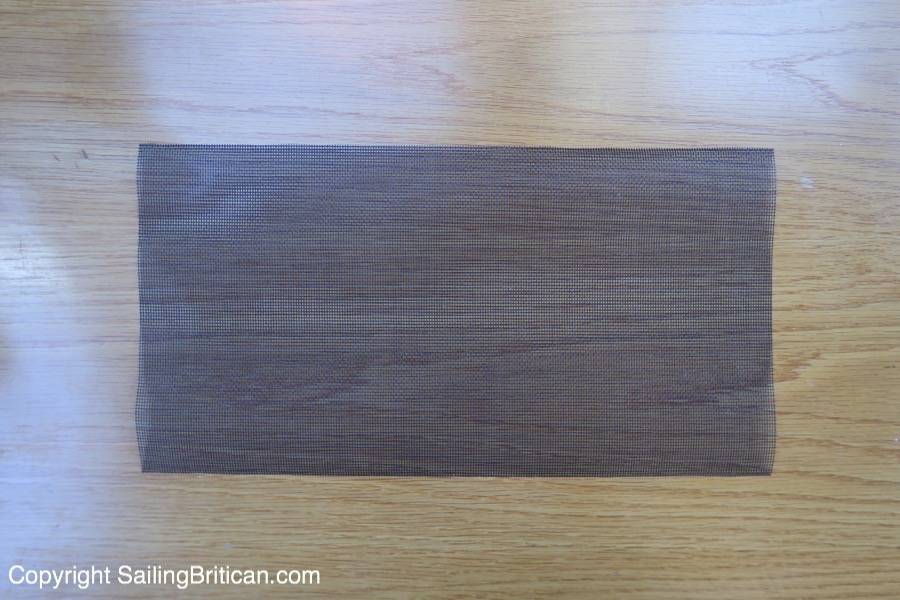
Step 7: Glue both foam pieces to the screen
Before gluing, make sure everything lines up. Glue the bottom foam, place the screen on top, glue the top foam, and make a sandwich.
Place a heavy book over the screen and allow it to dry. Once dry, cut the excess screen away and discard it.
Step 8: Fit screen to port window
Once the screen is dry, fit it into the window. If it doesn’t fit well and bubbles towards you, you might need to strip the sides down. Cut tiny pieces away until the screen fits snuggly.
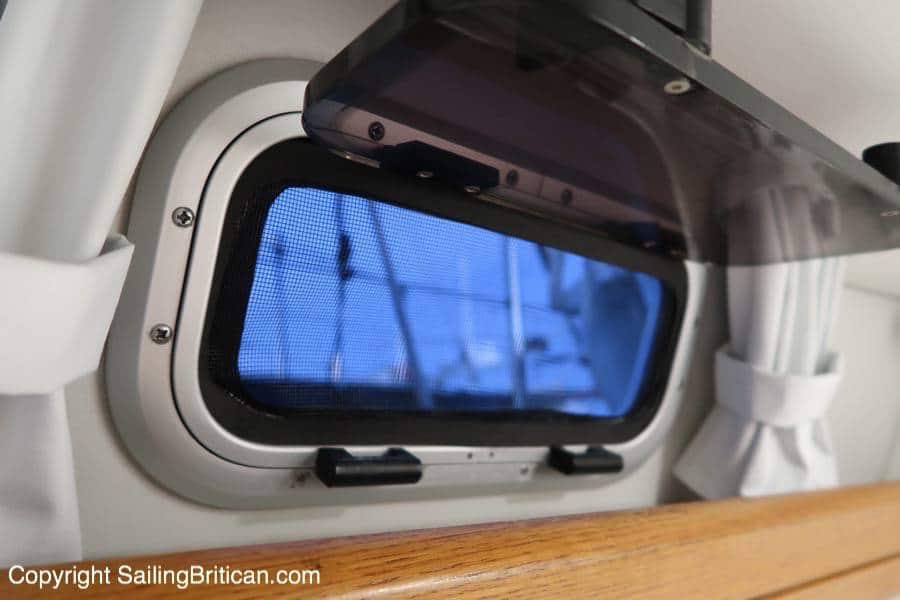
If you have any questions, comments or suggestions about port screens, please leave a comment below 🙂
Other Articles & Videos of Interest?
- 7 Boat Safety Mistakes and How to Correct Them
- How to Increase the Lifespan of Your Batteries
- How To Find A Boat Buddy
- Provision and Prepare your Boat for Passage – Video
Other Resources



Does this method work or the coach roof opening ports in the heads? Our bunk room has screens/ blinds fitted but these do not work in the heads due to the shower rail.
Brilliant idea for the ports we have without screens.
Not sure how they’ll work outside of the port windows Pauline. The materials are so inexpensive it’s worth giving it a go 🙂
That’s a very good idea. I wish I’d known before I purchased ours three years ago from the manufacturer.
Well Ken – if you ever lose one you now know what to do 🙂
Pretty neat idea, thanks
Can you actually close the portlight with these in place?
No, Michael, you cannot on our boat. Smiles, Kim